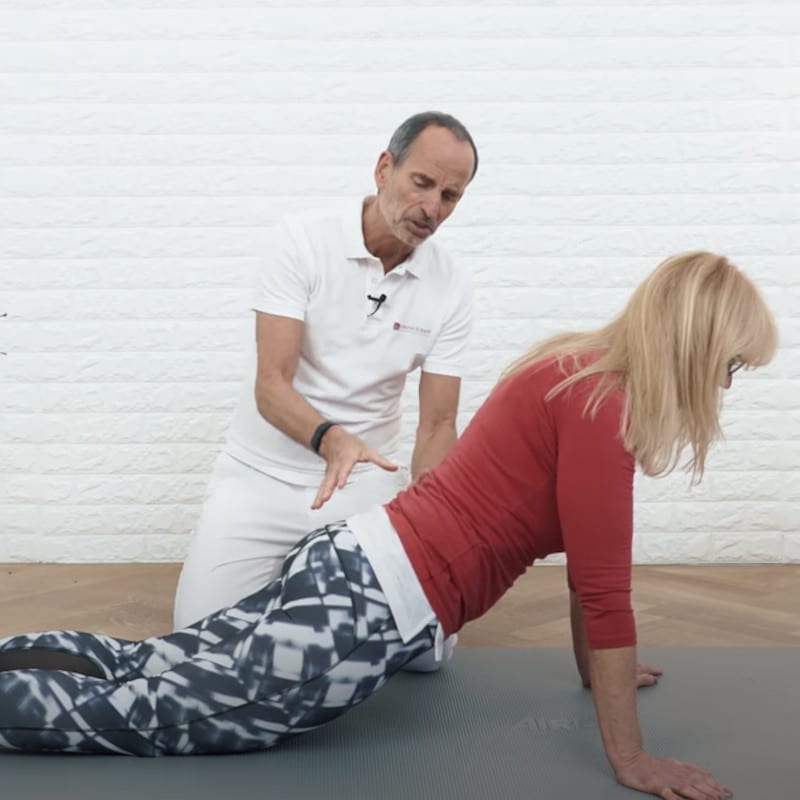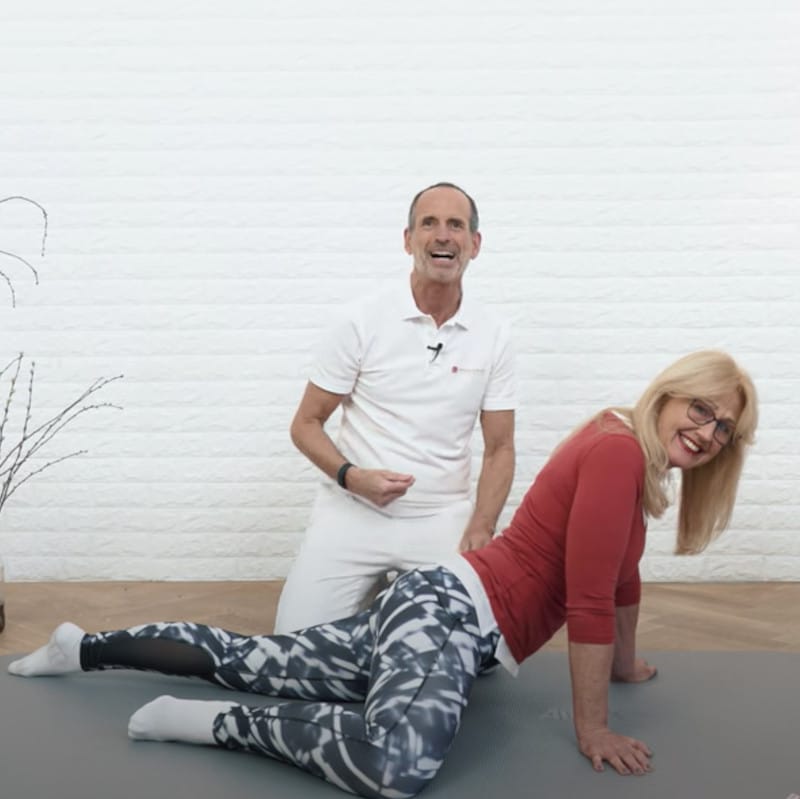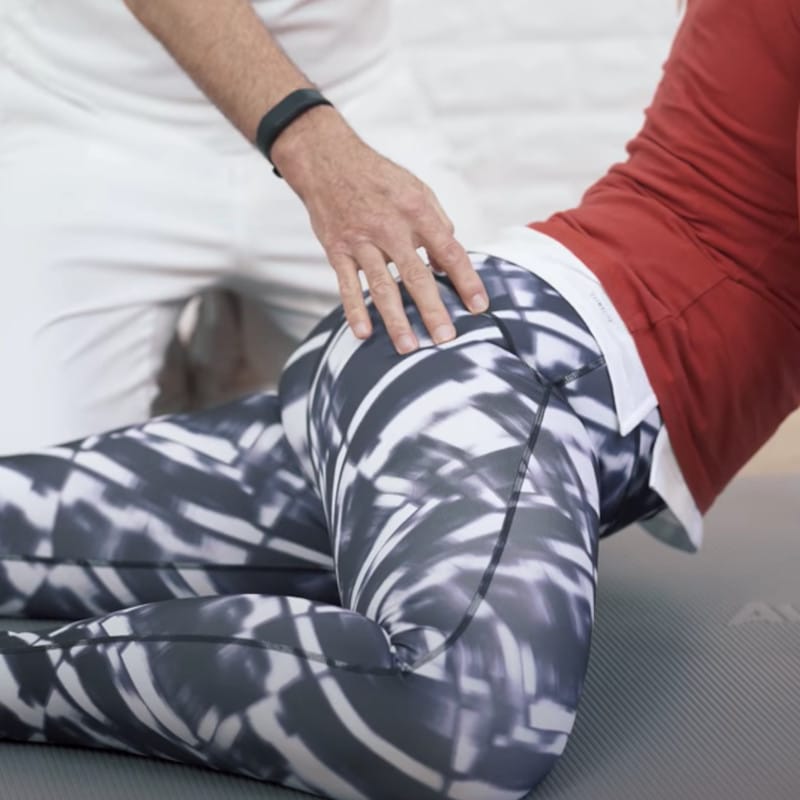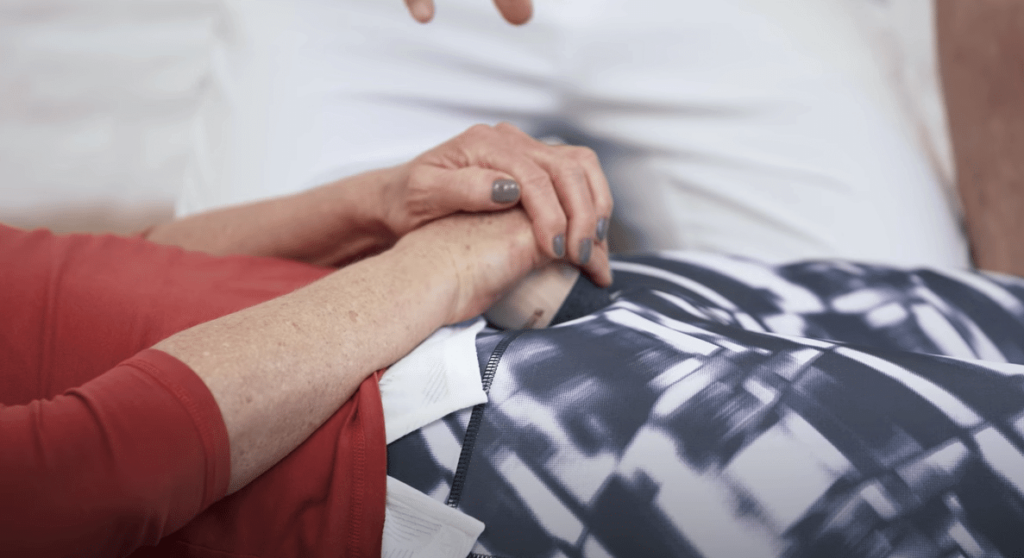Groin Pain
Groin Pain Exercises
Body Part:
Groin
Equipment:
Osteopressure Tool
Level:
Beginner
Groin Pain
Body Part:
Groin
Equipment:
Osteopressure Tool
Level:
Beginner
Are you out chasing that soccer ball across the lawn again and already feeling a violent tugging in your groin area? And is the pain radiating out into your thighs? Pain specialist Roland Liebscher-Bracht has successfully helped many athletes to get their adductor and groin pain under control and prevent acute groin injuries, especially where there is pubic bone inflammation. In the following video, he shows how you can use two acute exercises to ease groin pain and prevent unwelcome recurrences, which may involve downtime and/or long periods of therapy.
Below, you will also find a detailed description of these stretching exercises for groin muscles so you can read through the procedure at your leisure.
Incidentally, even if you are not a competitive athlete and want to prevent groin strains, and the only running you do is with your fingers over the keyboard, the remote control and your mobile phone, you can still be just as severely affected by pain in the groin muscles. So our exercises could be of help to anyone.

Sign up for our free newsletter and discover how to manage your pain yourself. Every two weeks, we’ll deliver follow-along videos and articles to your inbox.
Groin pain is caused by inflexible muscles at the front of your body – especially the hip flexors and abdominal muscles – and the resulting tension in your back and gluteal muscles. The muscles at the back try to compensate for the “pulling forward” effect of your front muscles. So it’s important for you to reduce this excessive tension, which is especially noticeable in the adductor muscles.
The first exercise is aimed at all three pain conditions – groin pain, adductor pain and pubic inflammation. And in the second exercise, Roland Liebscher-Bracht shows you how pressure at a certain point can help reduce pubic bone inflammation.

To get into the starting position, kneel on all fours. Move your pelvis to align and straighten your back so that there is no hollow. This position will ensure your groin pulls forward.
If necessary, move your hips further forward to keep your back straight – it must not be allowed to form a hollow. Keep your groin facing forward so that any stretch will be applied to those unyielding hip flexors. Now lower this position towards the floor so that you feel a stretch in the groin area.

Now it is a matter of further stretching and tensing the affected muscles:

Introducing a counter-movement: Try to pull your pelvis upwards; however, keep your overall position stable. This will create tension in the straight abdominal muscle. At the same time, press the knee of both your longer leg and that of your leg bent to the side, down into the floor.
Hold this tension for about ten seconds before release, and repeat this action three to four times. After each repetition, try to move your pelvis deeper down to stretch the muscles even more.
☝ Remember to do these strengthening exercises on both sides.

You will need either need a cork cut to a suitable shape, or the Osteopressure Tool from our Osteopressure Tool Set. For optimal effect, while working on the pubic symphysis, we recommend using the spherical handle in conjunction with the soft flat tip attachment.
That’s it! If you do the groin stretch and the osteopressure exercise regularly, you can prevent and reduce pain in the groin area.

Sign up for our free newsletter and discover how to manage your pain yourself. Every two weeks, we’ll deliver follow-along videos and articles to your inbox.
Then we would be happy if you shared it with your friends: